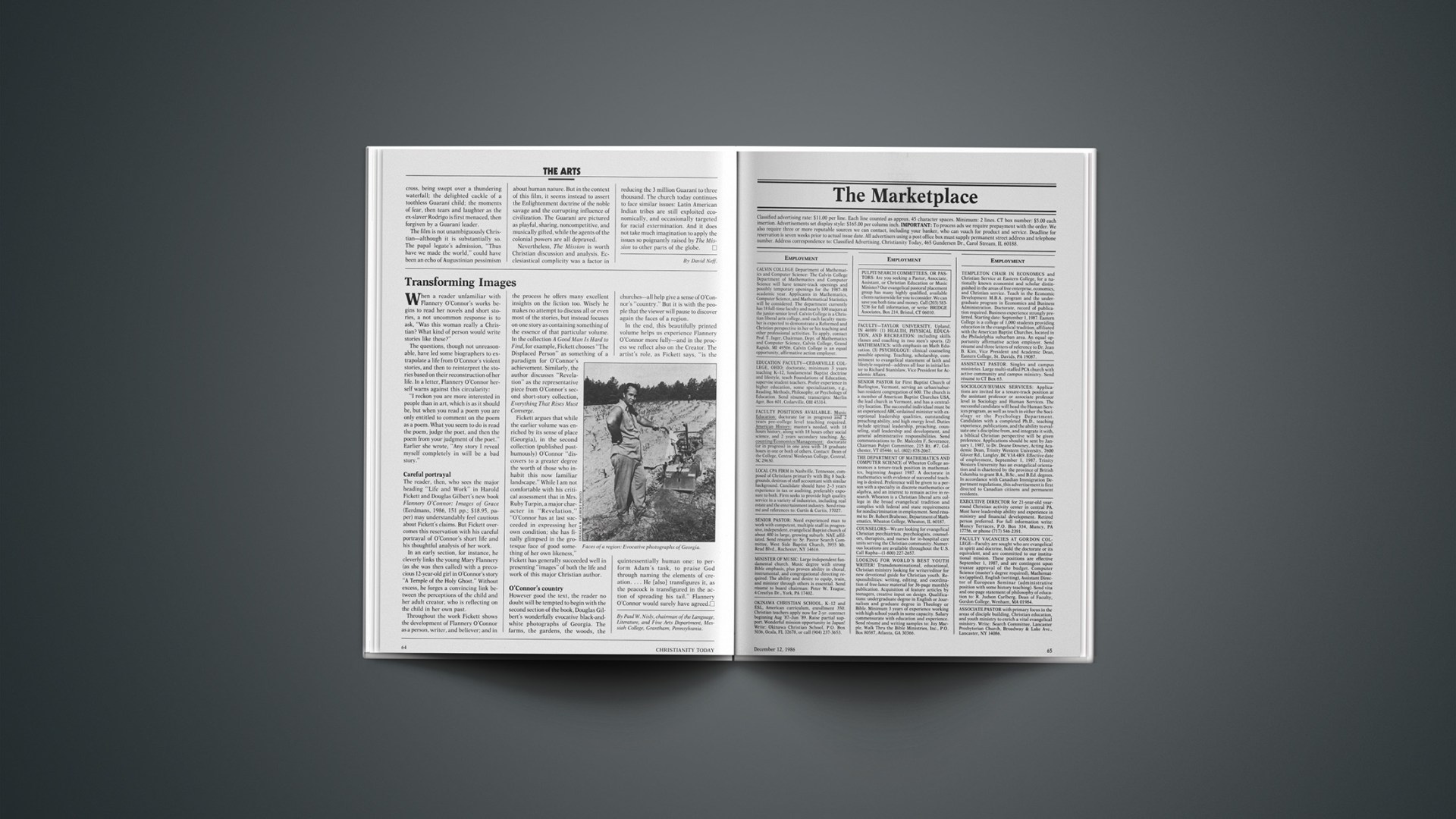When a reader unfamiliar with Flannery O’Connor’s works begins to read her novels and short stories, a not uncommon response is to ask, “Was this woman really a Christian? What kind of person would write stories like these?”
The questions, though not unreasonable, have led some biographers to extrapolate a life from O’Connor’s violent stories, and then to reinterpret the stories based on their reconstruction of her life. In a letter, Flannery O’Connor herself warns against this circularity;
“I reckon you are more interested in people than in art, which is as it should be, but when you read a poem you are only entitled to comment on the poem as a poem. What you seem to do is read the poem, judge the poet, and then the poem from your judgment of the poet.” Earlier she wrote, “Any story I reveal myself completely in will be a bad story.”
Careful Portrayal
The reader, then, who sees the major heading “Life and Work” in Harold Fickett and Douglas Gilbert’s new book Flannery O’Connor: Images of Grace (Eerdmans, 1986, 151 pp.; $18.95, paper) may understandably feel cautious about Fickett’s claims. But Fickett overcomes this reservation with his careful portrayal of O’Connor’s short life and his thoughtful analysis of her work.
In an early section, for instance, he cleverly links the young Mary Flannery (as she was then called) with a precocious 12-year-old girl in O’Connor’s story “A Temple of the Holy Ghost.” Without excess, he forges a convincing link between the perceptions of the child and her adult creator, who is reflecting on the child in her own past.
Throughout the work Fickett shows the development of Flannery O’Connor as a person, writer, and believer; and in the process he offers many excellent insights on the fiction too. Wisely he makes no attempt to discuss all or even most of the stories, but instead focuses on one story as containing something of the essence of that particular volume. In the collection A Good Man Is Hard to Find, for example, Fickett chooses “The Displaced Person” as something of a paradigm for O’Connor’s achievement. Similarly, the author discusses “Revelation” as the representative piece from O’Connor’s second short-story collection, Everything That Rises Must Converge.
Fickett argues that while the earlier volume was enriched by its sense of place (Georgia), in the second collection (published posthumously) O’Connor “discovers to a greater degree the worth of those who inhabit this now familiar landscape.” While I am not comfortable with his critical assessment that in Mrs. Ruby Turpin, a major character in “Revelation,” “O’Connor has at last succeeded in expressing her own condition; she has finally glimpsed in the grotesque face of good something of her own likeness,” Fickett has generally succeeded well in presenting “images” of both the life and work of this major Christian author.
O’Connor’s Country
However good the text, the reader no doubt will be tempted to begin with the second section of the book, Douglas Gilbert’s wonderfully evocative black-and-white photographs of Georgia. The farms, the gardens, the woods, the churches—all help give a sense of O’Connor’s “country.” But it is with the people that the viewer will pause to discover again the faces of a region.
In the end, this beautifully printed volume helps us experience Flannery O’Connor more fully—and in the process we reflect also on the Creator. The artist’s role, as Fickett says, “is the quintessentially human one: to perform Adam’s task, to praise God through naming the elements of creation.… He [also] transfigures it, as the peacock is transfigured in the action of spreading his tail.” Flannery O’Connor would surely have agreed.
By Paul W. Nisly, chairman of the Language, Literature, and Fine Arts Department, Messiah College, Grantham, Pennsylvania.










